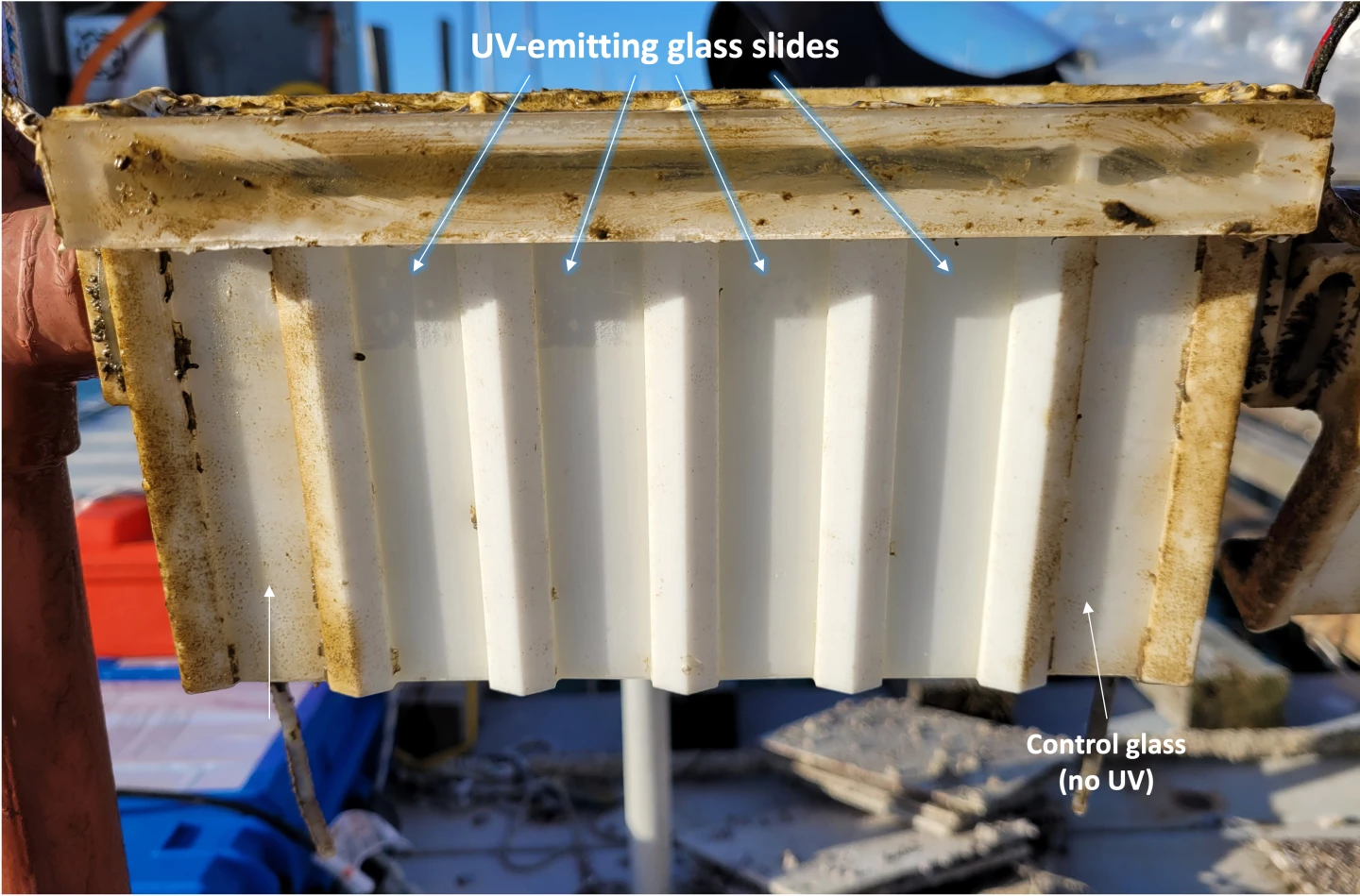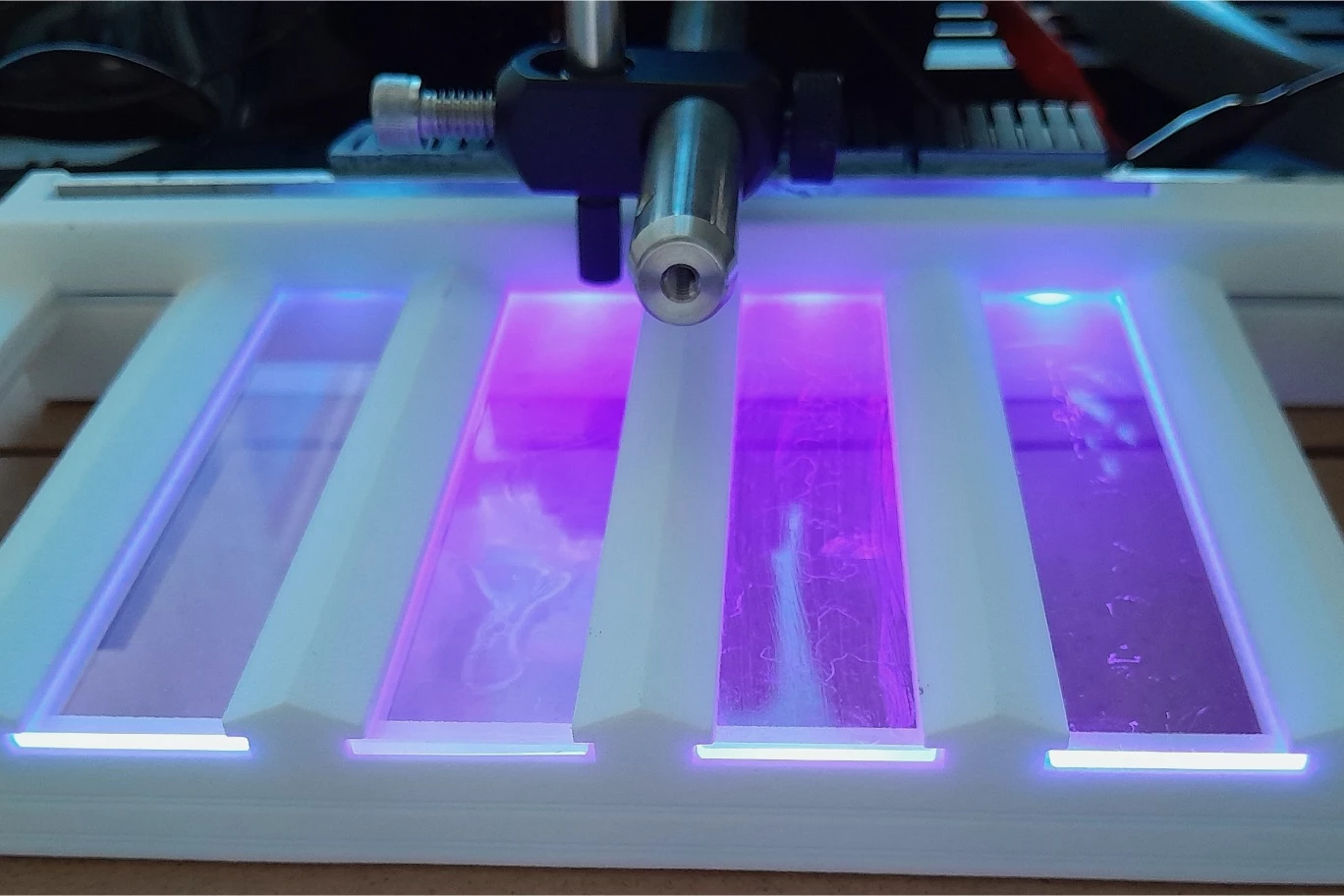Scientists are using UV-emitting glass to keep problematic undersea biofilms at bay. The technology may find use in applications such as underwater viewing ports and camera lenses, and perhaps even one day the hulls of ships.
When just about any material is left sitting in seawater for long enough, a slimy film of bacteria, fungi, algae and other marine microorganisms form on its surface. Larger organisms like barnacles then get a foothold on that film, making it their home as they grow and multiply.
Needless to say, such coatings make ships' hulls much less hydrodynamic, causing the vessels to use more fuel to travel at a given speed. The biofilms are also problematic for underwater structures, protective nets, and even seawater desalination plants.
This phenomenon is known as biofouling. The main methods of preventing it include coating underwater surfaces with either antimicrobial paint – which can harm the environment – or special nonstick materials, which have to be frequently reapplied.
One proposed alternative involves illuminating the surfaces with externally applied ultraviolet light, which kills microorganisms. Unfortunately though, UV rays become increasingly less effective the farther they travel from their source, plus murky water absorbs them.
That's where the UV-emitting glass (UEG) comes in. Instead of being illuminated by a separate light source, it is the light source.

Created by a team of scientists led by University of Massachusetts Amherst engineers, the material consists of a regular glass slide that's coated on the back with a layer of silica nanoparticles and a clear polymer.
An ultraviolet LED located beside the slide projects its light not onto the front or back of the glass, but into one edge of it. As the UV rays travel through the thickness of the glass, they're scattered and diffused by the nanoparticles, which reflect UV light but don't absorb it.
As a result, the entire front (water side) surface of the slide uniformly emits the ultraviolet light. It does so 10 times better than uncoated glass lit in the same manner, while still maintaining satisfactory visible and infrared light transmission.
In a test of the technology, UEG slides along with uncoated control slides were left submerged in the waters of Port Canaveral, Florida for 20 days. At the end of that period, it was found that the UEG had reduced visible biofilm growth by 98%.

The scientists now plan on experimenting with much larger sheets of glass, which will be submerged for a much longer timespan.
"The developed technology can be used for disinfection of transparent surfaces such as windows of ships, flotation spheres and moored buoys, camera lenses and sensors for oceanographical, agricultural and water treatment applications," says postdoctoral research associate Leila Alidokht, lead author of a paper on the study.
Asst. Prof. Mariana Lanzarini-Lopes, who is one of the corresponding authors, tells us that longer-term plans for the technology include adapting it for use on ships' hulls.
The paper was recently published in the journal Biofilm.






